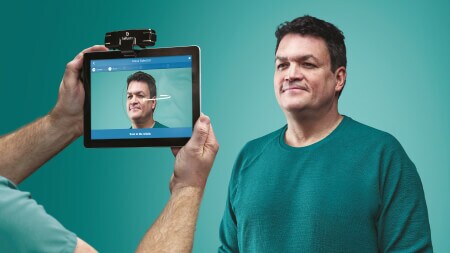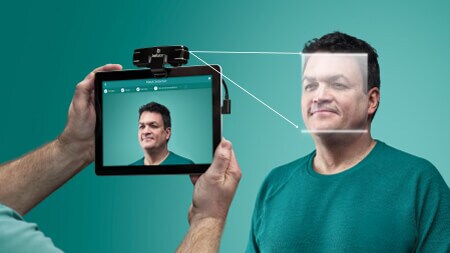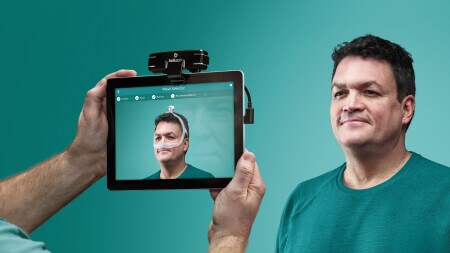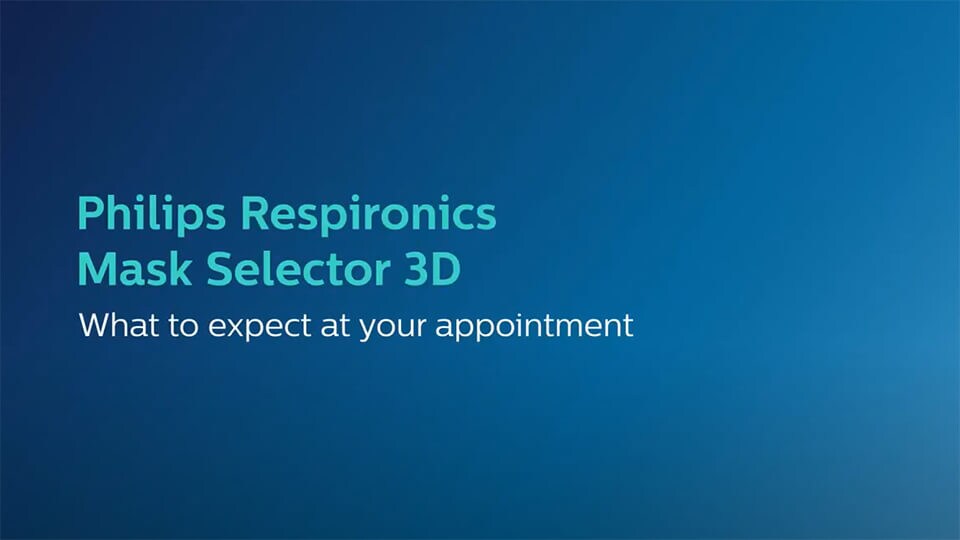Philips Respironics Mask Selector 3D
The right fit, the first time1


Find a Philips Respironics Mask Selector 3D provider near you

Find a Philips Respironics Mask Selector 3D provider near you

Philips Respironics Mask Selector 3D
The right fit, the first time1

Find a Philips Respironics Mask Selector 3D provider near you

Find a Philips Respironics Mask Selector 3D provider near you
When it comes to sleep apnea, the fit of a mask can make or break a good night’s sleep. 1 out of 3 people newly diagnosed with sleep apnea struggle to find the right CPAP mask for them.2 But with Philips Respironics Mask Selector 3D, that doesn’t have to be the case.
What is Philips Respironics Mask Selector 3D?
Philips Respironics Mask Selector 3D is a premium technology that can help you find the right CPAP mask fit, the first time.1 Our touch-free3 tool helps your Sleep Lab technician or Respiratory Therapist fit a mask, personalized to you.
How does Philips Respironics Mask Selector 3D work?
Get an accurate, precise CPAP mask recommendation with our latest technology, Philips Respironics Mask Selector 3D. Our proprietary software is based on over 10 years of facial scanning research for mask design. Its mask type, sizing and fitting software is built upon a wide range of ethnicities and geographies. When fit using Mask Selector 3D, users had a lower Average mask leak rate vs those fit using traditional methods4.

Our premium technology using a 3D camera takes, in roughly 20 seconds, 150 pictures of your face. Our system gathers 100,000 key data points of facial geometry from each picture, for a total of 15 million data points.

Our software then identifies the 46,200 points most critical to determining an accurate, precise CPAP mask recommendation, to help fit you with the right mask from the start.1

When set up with Mask Selector, users report being more confident they will continue using their recommended mask.5
It's time for you to have a personalized CPAP mask you can feel more comfortable wearing.
Find a Philips Respironics Mask Selector 3D location near you
Need product support?
Are you a sleep professional?
References 1. Data analysis after 90 days of use. 2019 Philips sponsored patient preference trial (n=310) . Patients scanned using the Mask Selector (n=153) vs. traditional fitting methods (n=157) 2. Mastromatto N, Killough K, Keenan BT, et al. The effects of changing the first CPAP mask on compliance. Sleep 41(suppl_1):A399-A400. DOI: 10.1093/sleep/zsy061.1074. 3. Scanning process to select and size a mask with Mask Selector 3D does not require touching the patient 4. Data analysis after 90 days of use; 2019 Philips sponsored patient preference trial (n=307)*. Patients scanned using the Mask Selector (n=150) vs. traditional fitting methods (n=157) 5. Data analysis after 90 days of use. Philips sponsored patient preference trial (n=310; n=253 completed questionnaire)*. Patients scanned using the Mask Selector (n=118) vs. traditional fitting methods (n=135).









